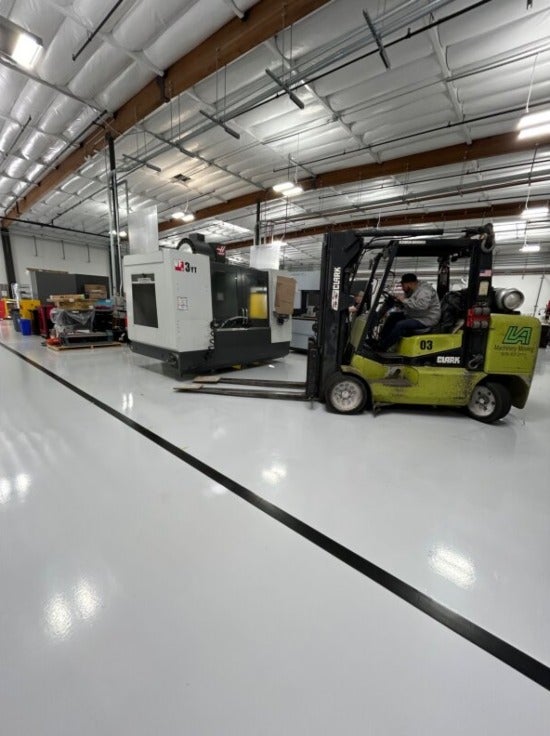10 Tips for Heavy Machinery Storage
Do you need to store heavy machinery like excavators, cranes, forklifts, or bulldozers? Prioritizing proper storage extends your equipment’s lifespan and ensures easy accessibility the next time you need it. Whether you’re storing machinery between jobs or preparing for a long off-season, the right preparation can save you from costly downtime and repairs when you retrieve the equipment from storage. Here are some tips to help you safely store your heavy machinery.

1. Check the Manufacturer’s Storage Recommendations
Before preparing your equipment for storage, review the manual to ensure you’re following the manufacturer’s best practices. If you don’t have a physical manual, check the website or call customer support. You may learn important details about fluid levels, battery care, and tire pressure. Some manufacturers may also recommend certain covers or specify conditions for short- vs. long-term storage.
2. Clean the Equipment
In preparation for storing your heavy machinery, clean it thoroughly to remove dirt, grease, and debris. Dirt can cause corrosion, while grease and grime buildup may lead to operational issues when you put the equipment back into use. Pressure washes the machinery, paying close attention to hard-to-reach areas where debris may accumulate. Let the equipment dry completely to prevent residual moisture from causing rust during storage.
3. Inspect for Repairs
Once the machinery is clean, perform a detailed inspection for existing damage or wear. Address issues like hydraulic leaks, worn belts, or loose bolts to prevent more significant damage from developing during storage. Conducting repairs beforehand also ensures that the equipment is in working order when you need it.
4. Lubricate Moving Parts
Lubrication prevents friction and rust while your equipment sits idle. Apply the recommended lubricant to all joints, bearings, and pivot points to create a protective moisture barrier. This is especially important for equipment with many moving parts, like excavators and cranes.
5. Change Fluids and Add Stabilizers
For machinery with engines, changing the oil and fluids before storage prevents contamination and engine damage. Be sure to top off the coolant and hydraulic fluid to avoid freezing or corrosion in the system. If you’re storing equipment for a few months or longer, add a fuel stabilizer to the tank to prevent fuel degradation. Run the engine briefly after adding the stabilizer to allow it to circulate through the system.
6. Remove or Disconnect the Battery
If your equipment won’t be used for an extended period, it’s wise to remove the battery and store it separately in a cool, dry place. Disconnecting the battery prevents it from slowly draining over time and extends its life. If removing the battery isn’t practical, at least disconnect it to avoid drainage or electrical issues.
7. Protect Electronics and Sensitive Components
Heavy machinery often contains electronic components, such as GPS systems, control panels, and sensors, which are vulnerable to moisture, dust, and extreme temperatures. Shield these components during storage by using protective covers, or remove detachable electronics and store them separately in a safe, dry place.
8. Inflate and Protect the Tires
If your machinery uses tires, inflate them slightly above the manufacturer’s recommended pressure. Properly inflated tires prevent flat spots and damage from long periods of inactivity. If possible, elevate the equipment slightly using blocks to take the weight off the tires and further reduce the risk of damage.
9. Plan Regular Inspections
Check on your equipment periodically while it’s in storage. Visual inspections every few months ensure no new issues have developed. Verify that protective coverings remain in place, moisture hasn’t accumulated, and there are no signs of pest infestations or structural damage. Maintain a detailed record of your inspections, repairs, and other activities related to your equipment while in storage. This log provides valuable information about your machinery’s condition when it’s time to retrieve it.
10. Store Indoors When Possible
Storing your heavy equipment indoors is ideal, as this protects it from the sun, rain, humidity, and other environmental factors. Prolonged exposure to UV rays can damage rubber components, while moisture can cause metal areas to rust. If you have the option, storing in a climate-controlled facility is an excellent investment in maintaining your machinery’s condition. If indoor storage isn’t available, cover the machinery with heavy-duty tarps and park it on a solid surface to avoid sinking or uneven wear.
Safe, Secure Machinery Storage in Los Angeles
LA Machinery Moving offers over 100,000 square feet of general storage and 40,000 square feet of climate-controlled warehouse space in Los Angeles, perfect for keeping your heavy equipment in peak condition. Our facilities protect your machinery from weather, vandalism, and other factors that can cause damage during storage. In addition to short- and long-term storage solutions, we provide loading, unloading, crating exporting, and packing services for your convenience. Contact us today to find a storage solution that fits your needs and budget.
